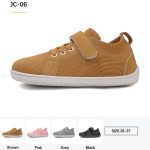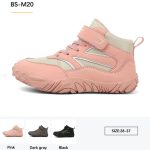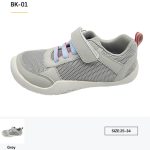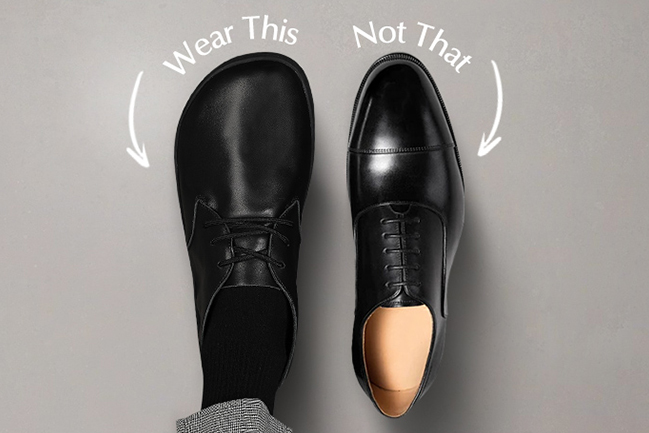In modern society, there are thousands of shoes (like any commodity) to choose from.
Usually, we choose shoes mainly for style and price, and often ignore the impact of shoes on health. At most, we will use “comfort” as an additional criterion.
In fact, shoes are the most important thing for health among the clothes we wear.
In this article,we will talk about shoes from the perspective of children, because their feet are too easily affected by shoes.
Why are children’s shoes important?
A few decades ago, shoes were very simple, and even children often did not wear shoes. It was in these decades that modern shoes began to become “complex”. For example, “shock-absorbing” cushioning, “supportive” insoles, pointed toes, and padded heels, not to mention “small high heels” for children.
However, children’s feet are most easily affected by these modern shoes.
A child’s feet will not fully develop until the age of 12. Before that, their feet are very easy to shape. When a child is born, each foot has 22 bones. By the age of three, the number of bones will double. During this period, the bones have not yet fully hardened, and the child’s feet have amazing plasticity and are easily affected by shoes.
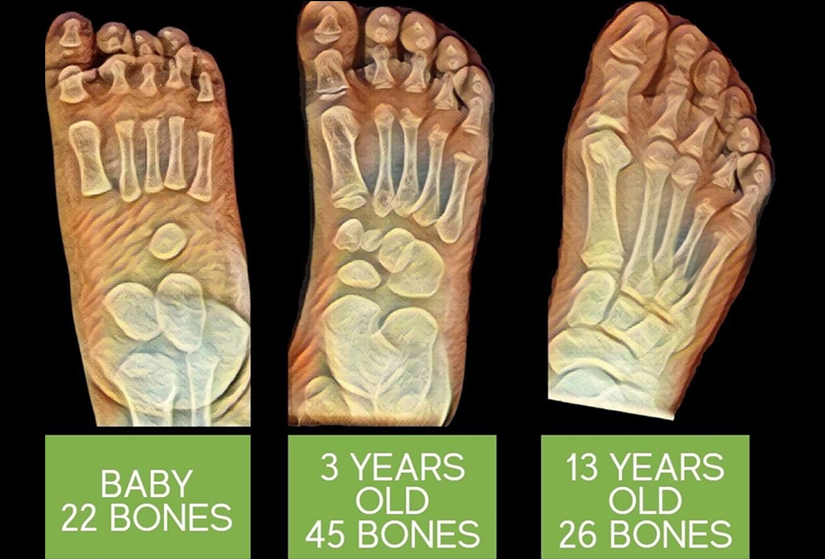
In addition to bones, the arch of the foot is also an important part. The formation of the arch of the foot begins when a toddler begins to stand with assistance and continues to develop after they begin to walk. You have seen the chubby soles of babies and you will know that no child is born with an arch in the foot. Each arch is born.
It takes 2-3 years for a toddler’s arch to develop. This strengthening process is essential to form the correct alignment and structure of the bones in the foot.
Wearing restrictive (pointed toes) and overly supportive (thick soles, arch support) shoes will hinder the development of children’s feet.
The key to shaping the arch of the foot is to allow the toes and the sole of the foot to move freely and naturally. When the movement of joints and muscles is hindered, the muscles in the child’s foot cannot be properly strengthened.
Adding extra support to the developing sole of the foot is like telling the arch of the foot: “I have you covered, you don’t have to get stronger.”
Slowly, the function of the arch of the foot is weakened, and the result is that the sole of the child’s foot loses its natural shock absorption.
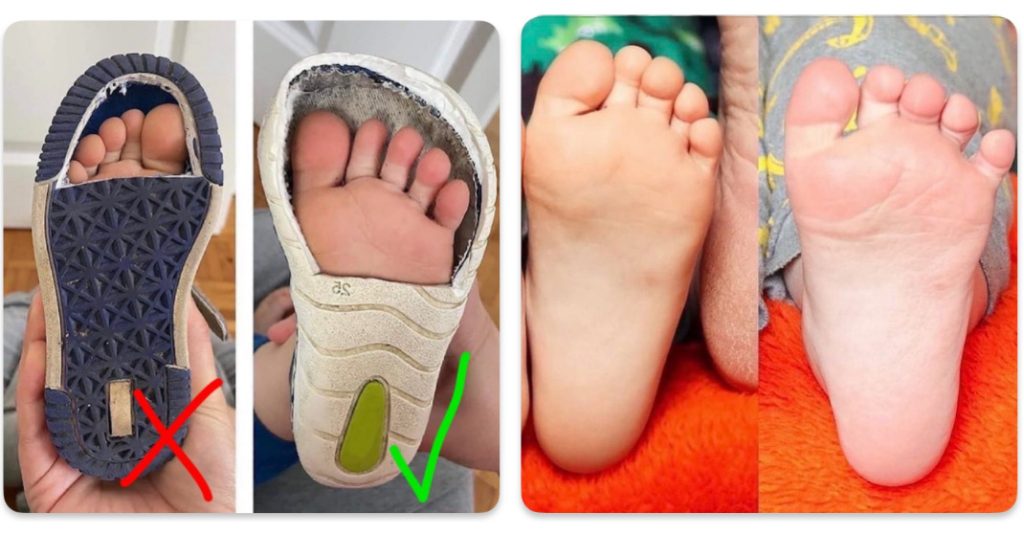
You can check now whether your toes are shaped by the pointed toe: In a natural state, do your big toe and little toe squeeze together (like the left one in the picture above)? If you have a younger child, look at her toes again, are they more like the little feet on the right in the picture above.
When our feet land, the toes should be naturally open, and the flexibility of the big toe is related to the perception of balance and can also disperse the pressure when landing. When the toes are squeezed together, the sense of balance and flexibility will be weakened.
Also influencing the perception of balance are the more than 200,000 nerve endings in the soles of the feet. This sensory feedback is critical to the development of balance, proprioception, and environmental feedback.
Nerve endings in the soles of the feet constantly transmit information between the body and the ground to the brain, which helps us maintain balance, adjust our gait, and avoid injury. In addition, nerve endings in the soles of the feet are also involved in coordinating muscle activity to ensure proper foot posture and movement, which has an important impact on overall body posture and movement control.
For a baby who is just learning to walk, 70% of her perception of balance comes from the soles of her feet.
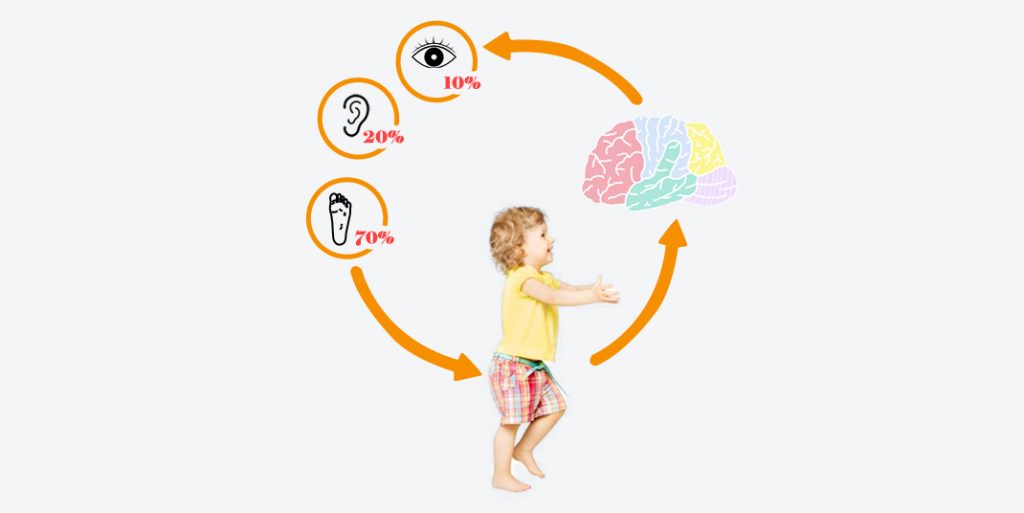
The thick soles for “cushioning” directly isolate the ground from the nerve endings in the soles of the feet (the reason for the need for “cushioning”, as mentioned earlier, is because the arch of the foot is weakened, which is a vicious cycle). The brain and body that lose this information perception will find it more difficult to maintain balance, and the walking posture will also be affected. If you have walked across the “balance beam” in the playground, you will know that it is difficult to walk in thick shoes, and it is much easier to walk barefoot.
Wouldn’t it be better to go barefoot?
After talking about so many negative effects of modern shoes on children’s feet, you may have realized that: extra support, pointed toes, and thick soles are all bad, so isn’t it best to go barefoot?
Indeed! Not wearing shoes is the best for the development of children’s feet. Whether it is the development of arch strength, the development of nerve endings, the perception of balance, or the improvement of gait and posture, it is the best.
Therefore, try to let your children go barefoot at home, and let them take off their shoes and run and play in safe places outdoors (such as lawns and sand pits).
Of course, apart from those environments that can guarantee safety, it is often impractical to go barefoot. For example, considering the hygiene and safety conditions on the streets. Children need shoes to give them a certain amount of protection.
How to choose shoes for children?
When choosing shoes for children, the simplest principle is: as close to the natural, barefoot state as possible.
The function of the shoes should be limited to protecting the soles of the feet, without any extra “protection”.
Specifically, you need to consider these key factors:
• Thin sole
• Flexible and soft sole
• Wide toe
• No raised heel
• No artificial support
• Lightweight
These shoes are: minimalist shoes, or they can also be called barefoot shoes.
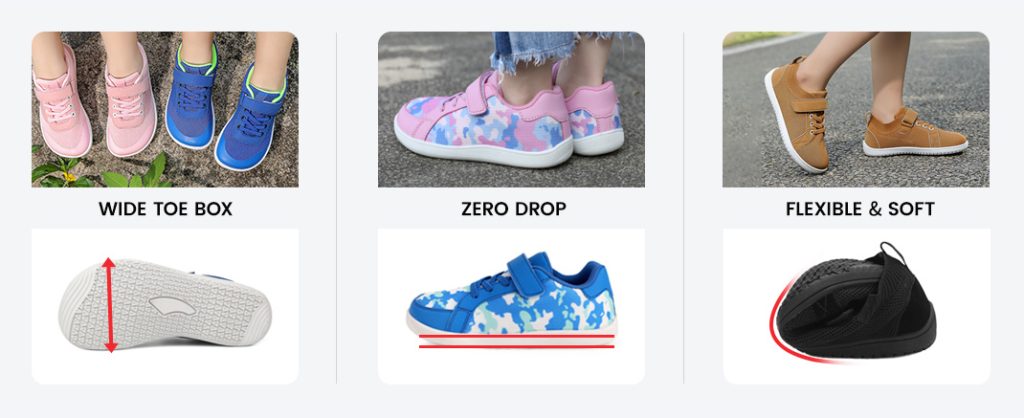
The characteristics of barefoot shoes is that they do not restrict normal movement or posture in any way. Your feet can move freely, just like being completely barefoot.
What are the potential risks of switching to “barefoot shoes”?
As parents, you may have been used to ordinary modern shoes since childhood, and you may have been indoctrinated with a lot of propaganda, such as the importance of “high-tech” shock absorption and support on the soles.
Now more and more research is beginning to point to the great benefits of barefoot shoes (the propaganda of modern shoes in the past many years was also based on “research”, but many of the research funds behind it came from shoe manufacturers). Faced with this huge change, you may wonder: Are there any risks or potential harms of barefoot shoes?
Indeed, barefoot shoes are also risky.
But the real problem does not come from barefoot shoes themselves. Usually the problem lies in the process of switching from ordinary shoes to barefoot shoes.
In fact, many rational people are more likely to accept the fact that barefoot shoes are a better choice. Thinking clearly and taking immediate action is often a good thing. But changing too quickly in this matter can easily cause damage to already fragile feet.
The longer a person wears those rigid, high-arched, and very restrictive shoes, the weaker his foot strength, flexibility, and balance ability will become. If you change to barefoot shoes all of a sudden, you will be easily injured.
Switching to barefoot shoes too quickly can cause the following common injuries:
1. Achilles tendon pain: The slightly higher heels of general shoes can shorten the Achilles tendon. Switching too quickly can increase the pressure on the Achilles tendon, leading to Achilles tendonitis or pain.
2. Big toe (bone) pain: Barefoot shoes require the toes to participate more in activities, and overuse may cause pain or discomfort in the big toe.
3. Plantar fasciitis: If the arch of the foot is weak, transitioning to barefoot shoes too quickly may cause plantar fasciitis.
4. Calf pain: Unfamiliar movement methods may also make the calf muscles feel tight or painful.
But these possible injuries should not stop you from trying healthier shoes. Because in the long run, the benefits are definitely worth it. However, when switching from regular shoes to barefoot shoes, you must take it slowly and give your body enough time to adapt to the new changes.
Start by walking barefoot more at home, then wear barefoot shoes for short walks, and gradually increase the intensity and duration of activities to give the feet enough time to adapt and recover.
The good news is: it is relatively easy to get children used to barefoot shoes!
The younger the child, the shorter the time her feet have been exposed to the effects of traditional footwear, and the easier it is for their developing feet to be reshaped.
Therefore, even if a child needs a transition period to barefoot shoes, it won’t be too long.
Recommended barefoot shoes for children



